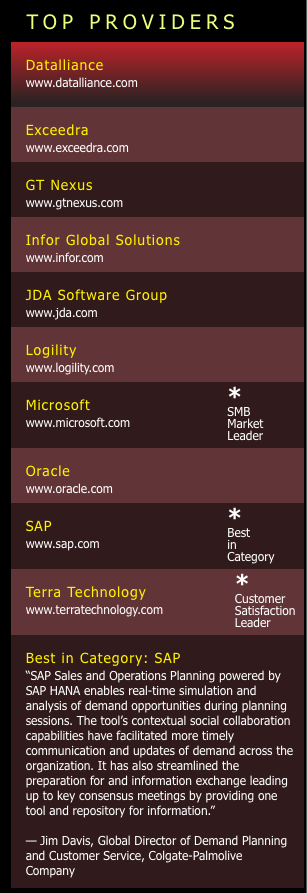2016 Readers' Choice Survey: Supply Chain Planning
By: Lora Cecere, Founder, Supply Chain Insights

In the 1990s, Advanced Planning was defined on linear optimization using 32 bit architectures. It was a license solution designed for regional planning groups. In 1998, the concept of tightly integrated APS with ERP was initiated and advanced as a concept termed ERP II. During the last decade, companies have implemented planning systems from ERP vendors. In general, these solutions offer advancements in integration, but the solutions are more difficult to use and the functionality is less robust. Supply chain planning is now shifting to new forms of best-of-breed solutions using Software-as-a-Service architectures and using more mature analytics (prescriptive and cognitive analytics). While mainstream and laggards are implementing the first and second generation of solutions, 9 percent of companies are implementing learning systems with these new forms of analytics.
This is a list of very different vendors, which is indicative of the varying definitions of supply chain planning across the industry. Datalliance is a Vendor Managed Inventory EDI technology solution while Exceedra is a trade promotion/S&OP technology provider, GT Nexus is supply chain network operating company while Logility and JDA are supply chain planning providers.
Terra Technology is the overall customer satisfaction leader. For people knowledgeable about Terra Technology, it is clear, Terra understands customer service. From the customer conferences, to the benchmarking study, to ongoing service and support, Terra has a humble; yet, effective approach to working with clients. It is very different than the sales-driven approach of most of the vendors on the list. In a sales-driven approach, the initial relationship is with the sales team, and often promises are not able to be actualized when the deal moves to the implementation phase.
SAP is the market share leader and the defacto contender. The selection of SAP is heavily influenced by a directive for IT standardization on SAP. While SAP is the undisputed leader in providing a system of record, when deployed, clients have been frustrated by the gaps in SAP APO. It is yet to be seen whether all of the gaps will be addressed in the new product launch of SAP IBP on HANA 4. As a result, note that the overall satisfaction ranking of this category is not very high.
In consumer goods, the companies best at demand planning are General Mills and Procter & Gamble. General Mills is also doing well in network design and inventory optimization. In the rest of the industry, companies are still struggling to implement planning solutions and build effective planning organizations.
The good news for the buyer is that there are now more options. Logility has some strong implementations in apparel, and JDA is making a comeback in the market after the rationalization of the Manugistics and i2 Technologies assets.
